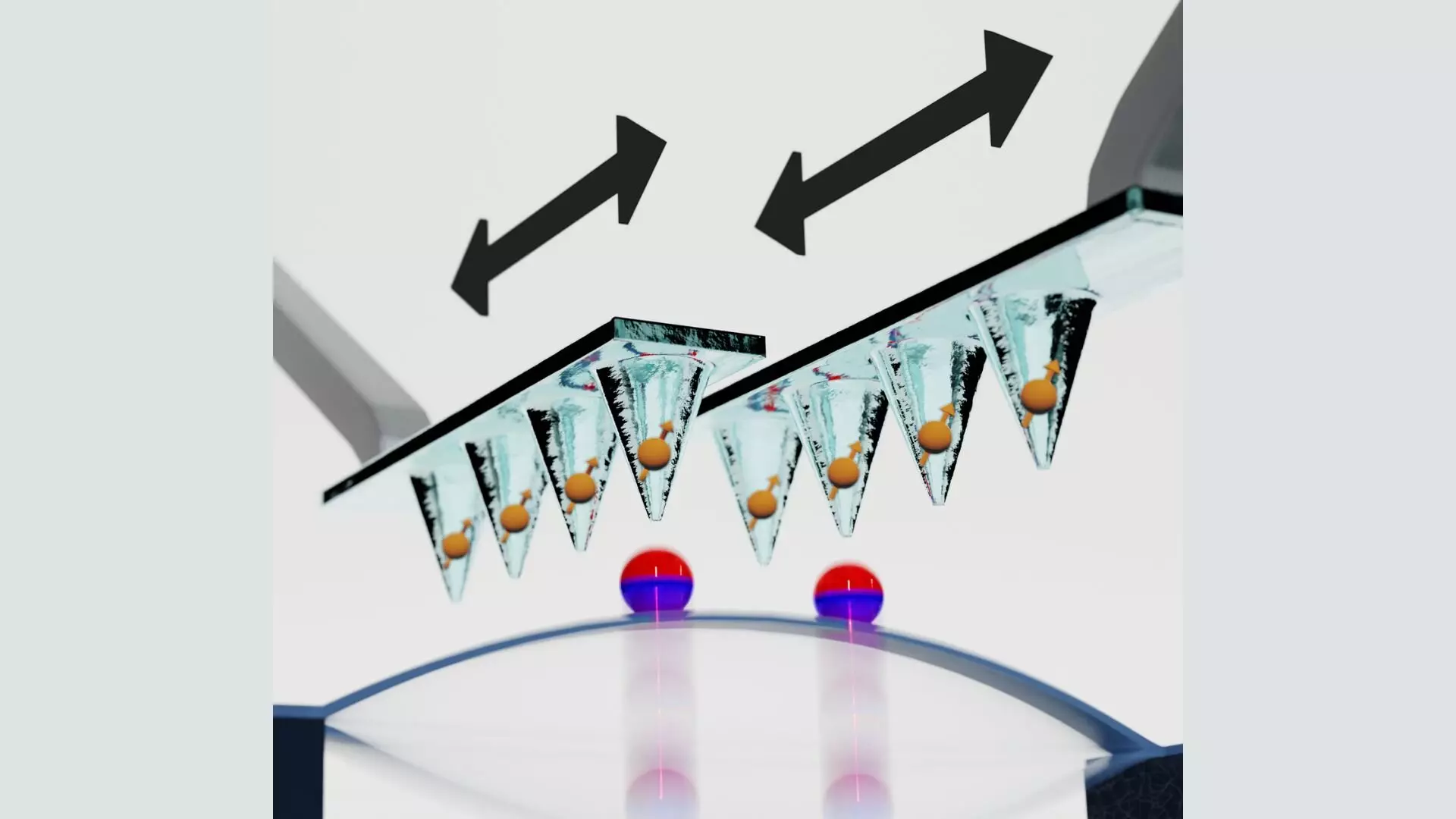As the dawn of quantum computing approaches, researchers face a myriad of challenges in developing scalable and efficient systems for quantum information processing. Among the most significant hurdles is the integration of qubits—quantum bits that encode information—into functional, large-scale architectures. Solid-state spin qubits, particularly nitrogen-vacancy (NV) centers in diamond, have emerged as front-runners in this race due to their remarkably long coherence times and stability. However, there remains an inherent limitation regarding scalability, as interactions between these qubits are typically constrained to short distances, hampering their potential for practical applications.
In a groundbreaking study published in Physical Review Letters, researchers led by Frankie Fung from Professor Mikhail Lukin’s group at Harvard University propose a revolutionary architecture that could bridge this gap. Their methodology aims not just to enhance the connectivity of solid-state spin qubits, but to fundamentally reshape how we conceive quantum networks. This innovative approach seeks to harness the potential of nanomechanical resonators as mediators of interaction, paving the way for programmable quantum systems that could outperform classical counterparts.
The Architecture: A Symphony of Motion and Spin
At the heart of this innovative design lies the coupling of NV centers in diamond with minuscule nanomechanical resonators. Typically, diamond atoms are bonded in a tetrahedral formation, with the presence of nitrogen replacing a carbon atom resulting in an NV center—a locale known for its unpaired electron spin states. These unpaired electrons equip NV centers with sensitive magnetic properties, making them excellent candidates for qubits that can be easily manipulated and measured optically.
Nevertheless, the challenge of limited interaction range looms over existing technologies. Solid-state spin qubits predominantly rely on magnetic dipolar interactions that are constrained to nanometer scales. Thus, large arrays of qubits become cumbersome to control. Fung’s team proposes a direct solution through an ingeniously designed architecture that utilizes mechanical oscillators to mediate and extend the interactions among qubits. The proposed nanomechanical resonators vibrate at high frequencies and are sensitive to a range of external forces. This coupling would enable a more extensive interaction reach, facilitating non-local qubit connectivity and enhancing the potential for quantum entanglement—an essential element in advancing quantum computation.
Precision Control with Advanced Technology
The proposed architecture introduces individual scanning probe tips, each harboring a spin qubit, that can glide over the surface of the nanomechanical resonator. This precision mobility permits programmable control over which qubits interact, thus allowing users to dictate the connectivity within quantum systems dynamically. Fung elaborates, “By orchestrating the positions of qubits in relation to the resonator, we can mold the configuration of our quantum network, making it programmable in nature.”
Furthermore, this system holds intrinsic advantages beyond simple connectivity. The resonator’s engineering allows it to operate as an effective waveguide, which significantly streamlines the laser excitation process necessary for manipulating the qubit states. The incorporation of micro magnets around the nanobeam, responsible for creating the required magnetic fields for spin manipulations, adds another layer of sophistication to this architecture.
Yet, it is not merely design and control that bring this innovation to life; empirical demonstrations are paramount. The research team has already established a proof-of-concept by successfully preserving coherent information in an NV center while moving it through a magnetic field gradient, proving the viability of their approach. The quality factor of around a million at low temperatures suggests that mechanical motion can remain coherent even when entangled with a micromagnet, but the aspiration remains for even higher coherence.
The Future Landscape: Hybrid Quantum Systems
Clarifying the long-term vision, Fung envisions a landscape enriched with hybrid quantum systems by incorporating optical cavities alongside nanomechanical resonators. This integration could facilitate more precise measurement of mechanical motion and enable the resonators to be prepared in their ground states—a profound leap towards complex experiments that transfer information seamlessly between spins and mechanics.
The capabilities of nanomechanical resonators to harness forces, such as Coulomb repulsion and radiation pressure, herald an era of new possibilities in the quantum domain. By allowing interactions among a various array of qubits—each with distinct strengths—they provide a platform capable of maximizing the advantages of different qubit technologies while allaying their limitations. Thanks to their fabrication compatibility with existing semiconductor technologies, these resonators could be integrated with electrical circuits or optical components, ultimately setting the stage for scalable quantum networks capable of linking qubits over extensive ranges.
In the relentless pursuit of quantum computing, the integration of nanomechanical resonators with solid-state spin qubits marks a transformative step forward. This research not only illuminates the path toward scalable architectures but also inspires a reevaluation of how we conceive the interrelationships between different quantum systems. The journey ahead is filled with complexity and promise, underscoring the importance of continued innovation in this exhilarating field.


Leave a Reply